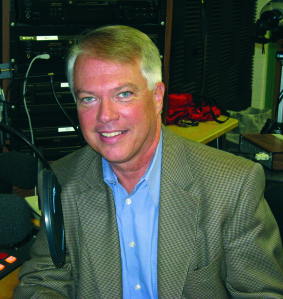Caldwell University
November 30, 2012
Media Report Card: Election 2012

By Professor Bob Mann, Chair, Communication Arts at Caldwell University
Host “Let’s Consider the Source” on Sirius/XM Public Radio
Many of us are suffering from political withdrawal. The end of the 2012 Presidential campaign gave me a chance to analyze the media’s performance during my weekly radio talk show, “Let’s Consider the Source.”
The controversial U.S. Supreme Court decision, Citizens United, had opened the floodgates for corporations and political action committees to spend unlimited amounts of money for candidates. Democrats feared that wealthy individuals and powerful companies would crush them with pro-Republican TV ads.
Rem Rieder, editor of the American Journalism Review, is one of our frequent contributors. I asked him if the November Obama win diminished the impact of Citizens United. Rem told my audience, “All the fear and loathing about Citizens United turned out to be overstated. It turns out that the Democrats, who so vigorously critiqued the decision, won the election.”
The biggest winner on November 6th was, of course, President Obama. It was also a victorious night for pollsters. After the 2000 Bush/Gore Florida disaster, pollsters had lost credibility. Major networks had called the election for Gore twelve years ago as it were certified fact. We all know that so-called “hanging chads” and a Supreme Court decision changed all that.
This year, the pollsters not only got it right, they got it right early. It led to an embarrassing exchange on Fox News between the anchors and GOP guru Karl Rove, who was on air as a commentator. Rove protested that the call came too soon. The Fox anchors went to the “Decision Room” and showed Rove why Ohio was in the Obama column.
So why was this so different from 2000? Another LCTS guest, Political Science Professor Krista Jenkins, is the director of the Public Mind at Fairleigh Dickinson University. Public Mind is a polling operation which primarily focuses on New Jersey issues. Dr. Jenkins told me, “2000 was an aberration.” She added, “The percentage difference between the final results and the aggregation of the final polls was less than about a point” this year.
There are other key media moments in the campaign. It is amazing that Mr. Obama was able to survive his terrible performance in the first debate. Equally important is the role of social media. The viral clip of Romney’s “47 percent” comment could have been a fatal blow long before Election Day. The Republican candidate survived, but it still may have been in the minds of some voters weeks later.
Many people credit President Obama’s handling of the Hurricane Sandy devastation as a moment in which he was able to look like a leader and a statesman in a crisis just days before the voting.
From 1952 until 2008, television was the most powerful media force in Presidential politics. In 2012, social media such as Twitter, Facebook and You Tube joined TV at the top of the media heap.
We now turn to coverage of the race to the “Fiscal Cliff.” Let’s see if the media can give understandable explanations of complex financial information without “dumbing it down.”
Professor Mann hosts “Let’s Consider the Source”, that can be heard Sundays at 7:30PM Eastern time on Sirius/XM Public Radio (XM ch 121 Sirius Ch. 205)





